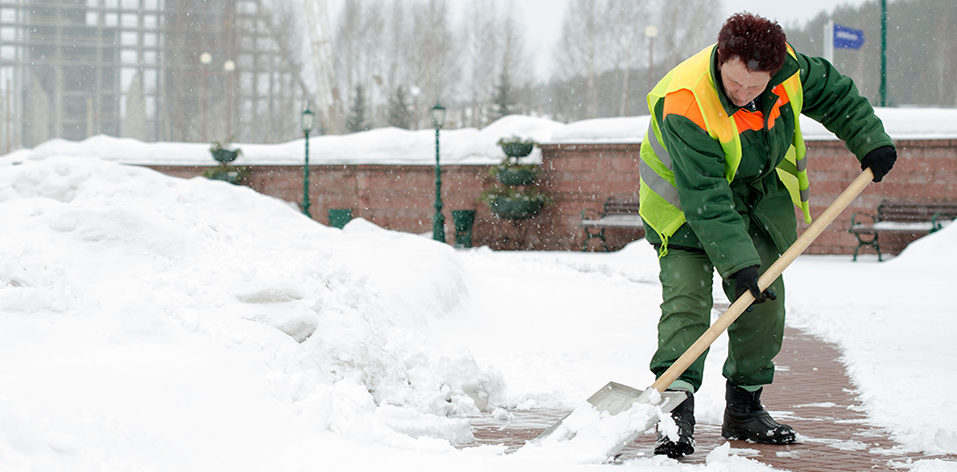While many people recognize that shovelling snow is hard work, physiotherapists caution that shovelling can place severe stress on your heart, and cause stress and strain on your body. Research has identified snow shovelling as a high-risk activity for heart problems. Every year, shovellers also sustain injuries such as pulled and strained muscles from repetitive twisting and improper lifting. However, Canadians can still enjoy cardiovascular benefits from snow shovelling, if they prepare themselves and listen to their bodies.
Snow shovelling has a similar intensity to jogging, racquet sports, and other strenuous sporting activities. Individuals will be better prepared for shovelling if they avoid being sedentary by regularly participating in activities like walking.
Important tips for shovellers include warming up before shovelling, taking frequent breaks, and separating the job into smaller stages to prevent overexertion. Shovellers should take notice of any symptoms of back pain or repetitive strain, and should be aware of any warning signs of cardiac distress including shortness of breath, chest and/or upper body pain or discomfort, palpitations, and other symptoms such as anxiety, sudden extreme fatigue, nausea, dizziness or lightheadedness.
Shovelling can be made even more difficult by the weather. Cold air makes it harder to work and breathe, which adds extra strain on the body. Cold, tight muscles are more likely to strain than warm, relaxed muscles. Take time to stretch and prepare your body for activity with a simple warm-up before shovelling, and wear warm clothing.
PHYSIOTHERAPY CAN HELP
Physiotherapists offer the following tips to you help get a handle on safe shovelling:
1. CHOOSE A SHOVEL THAT’S RIGHT FOR YOU
A shovel’s handle is the appropriate length when you can slightly bend your knees, and hold the shovel comfortably in your hands at the start of the shovel stroke.
A bent-handled shovel can reduce bending compared to a traditional straight-handled shovel.
A shovel blade that is made of plastic will be lighter than a metal one, putting less strain on your spine.
A smaller blade may be better than a larger one because it avoids temptation to pick up a pile of snow that is too heavy for your body to carry.
2. USE PROPER TECHNIQUES
Grip the shovel with your hands at least 12 inches apart, and keep one hand close to the base of the shovel. Positioning your hands further apart will help increase your leverage.
Squat with your legs hip-width apart, knees bent and back straight. Lift with your legs. Do not bend at the waist.
Scoop small amounts of snow into the shovel and walk to where you want to dump it. Holding a shovel of snow with your arms outstretched puts undue strain and compression on your spine.
Step in the direction in which you are throwing the snow. This will help prevent twisting of the low back and ‘next-day back fatigue’ experienced by many shovellers.
3. TAKE CARE OF YOUR BODY
If you have any doubts about your ability to shovel due to health concerns, injuries, or inactivity, consult a physiotherapist.
Clear heavy snow in two stages – by skimming snow from the top, then removing the bottom layer
Take a short rest or decrease the intensity of effort slightly if you find yourself unable to say a long sentence in one breath.
Take frequent breaks when shovelling – stand up straight and walk around periodically to bring your spine back to a neutral position. You can also do standing extension exercises by placing your hands in the small of your back, bending slightly backwards, holding the position for several seconds, and repeating this movement 5 to 10 times.
If you are experiencing pain, consult a physiotherapist. Physiotherapists are primary health care professionals who help people of all ages and lifestyles gain and maintain their physical mobility. With their applied knowledge and understanding of the human body in action, physiotherapists can work with you to increase your mobility, relieve pain, build strength, improve balance and increase cardiovascular function. Physiotherapists will also help you prevent the onset of pain or injury, allowing you to maintain your desired level of active living.
View original article on physiocanhelp.ca.
Book an assessment with Zoomers
Use our online booking tool to find a time that works for you!


